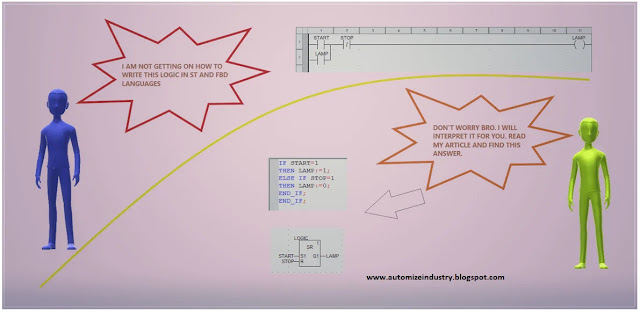Types of Automation
19 July, 2022.
In this
post, we will see the various types of automation.
As the name suggests, automation is a means of automatically executing any process. In today’s industrial world, almost all the processes are becoming automatic. This is because it reduces time, increases efficiency and reliability, reduces human life endangering, increases overall environment safety, reduces errors and bugs in operating a system, and provides new means of increasing flexibility of industrial operations. Automation uses a wide range of machine-aided tasks and computers. It is used in almost every types of industries. In this post, we will see the different types of automation used in an industry.
Fixed Automation:
This is the most basic type of automation. As the name suggests, the
machines and equipment which are designed to manufacture a product are fixed
and cannot be changed. This type of automation is also called as hard
automation. In systems where a large mass production is required continuously
for a same type of product and without any change, this type is preferred. Because
there will not be any change in operation and design, you can manufacture the
products continuously without any stress to deliver new design products. So,
you can also call fixed automation as repetitive automation. You get the
highest profit margin in this type.
Everything in fixed automation; from cams to gears to wiring to hardware
and program is fixed in this type. You do not have the option to change
anything. It is therefore subjected to high initial investment; because once
invested, you did not need to look at anything else. It is thus suitable for
products which are required in large volumes daily.
There are some demerits too in this type. The first and foremost weak
point is it’s inability to change anything. Also, this type is the costliest of
all ones.
A classic example of fixed automation is a conveyor system or biscuit manufacturing system. The conveyor is designed to move at a fixed position with transferring materials. A biscuit manufacturing system will produce the same biscuit in bulk quantities repeatedly. You cannot change the biscuit, because a change in biscuit will require a corresponding change in machinery design.
Programmable Automation:
This is the second advanced layer
of automation. As the name suggests, the machines and equipment which are
designed to manufacture a product are variable and can be changed. This type of
automation is also called as batch production automation. In systems where a
large mass production is required continuously for different types of products,
this type is preferred. But, remember that the production rate will be lower
than fixed automation; because you will require time to change design and
adjust accordingly. Once the system is adjusted for a particular batch, you can
then run the system accordingly.
A company sometimes manufactures
products in different batches. Suppose the same machine has to produce five
types of foods; then the machine will be programmed and designed accordingly to
manufacture that particular type. You need to write new programs for each new
process. This type of automation is achieved by numerically controlled machine
tools (NC and CNC machines), PLC’s and industrial robots. Here, you can write
the program accordingly to vary the system design.
This type too has it’s own disadvantages. It has lower production levels as compared to fixed automation. Also, you require skilled manpower and good technical products to cater to changes in product design. Because, if there is inefficiency here, then the final result will deteriorate.
Flexible Automation:
This is the most advanced layer of
automation. As the name suggests, the machines and equipment which are designed
to manufacture a product are variable and can be changed; but without stopping
the system. This type of automation is an advanced version of programmable
automation. In systems where a large mass production is required continuously
for different types of products and without hampering the production time, this
type is preferred. But, remember that the production rate will be lower than
fixed automation and higher than programmable automation. Because it’s true
that you have changed the machine working instantly; but you will need to
monitor how it is performing initially and if it is not performing, then you
will need a downtime to do the changes. But, on the flip side, once the
changeover of system has happened instantly without any hiccups, then you can
then run the system accordingly.
For example, consider that three
different machines and systems have been designed and assembled to manufacture
products. The PLC is controlling one type of product. When there is a need to
manufacture second product, the PLC will automatically change the program to
the second machine which is ready to run. This is flexibility. Means, you get
to understand that you are able to manufacture different products without any
downtime and hurdles.
I have covered the general types of automation. I have
also not attempted to cover every theory of these types deeply; you can learn
it easily once you get familiar with them. I have just given you an insight of
these types of controls. Once you are done with these, I am hopeful you will be
easily able to understand any system properly. Learn the basics and explore a
new type of study in this type of automation. It will take some practice and as
you go on selecting the automation type, you will become more familiar with it.
Thank you guys; I hope you enjoyed reading the practices
normally used for this type of study in industrial automation.




Comments
Post a Comment
If you have any queries, please let me know